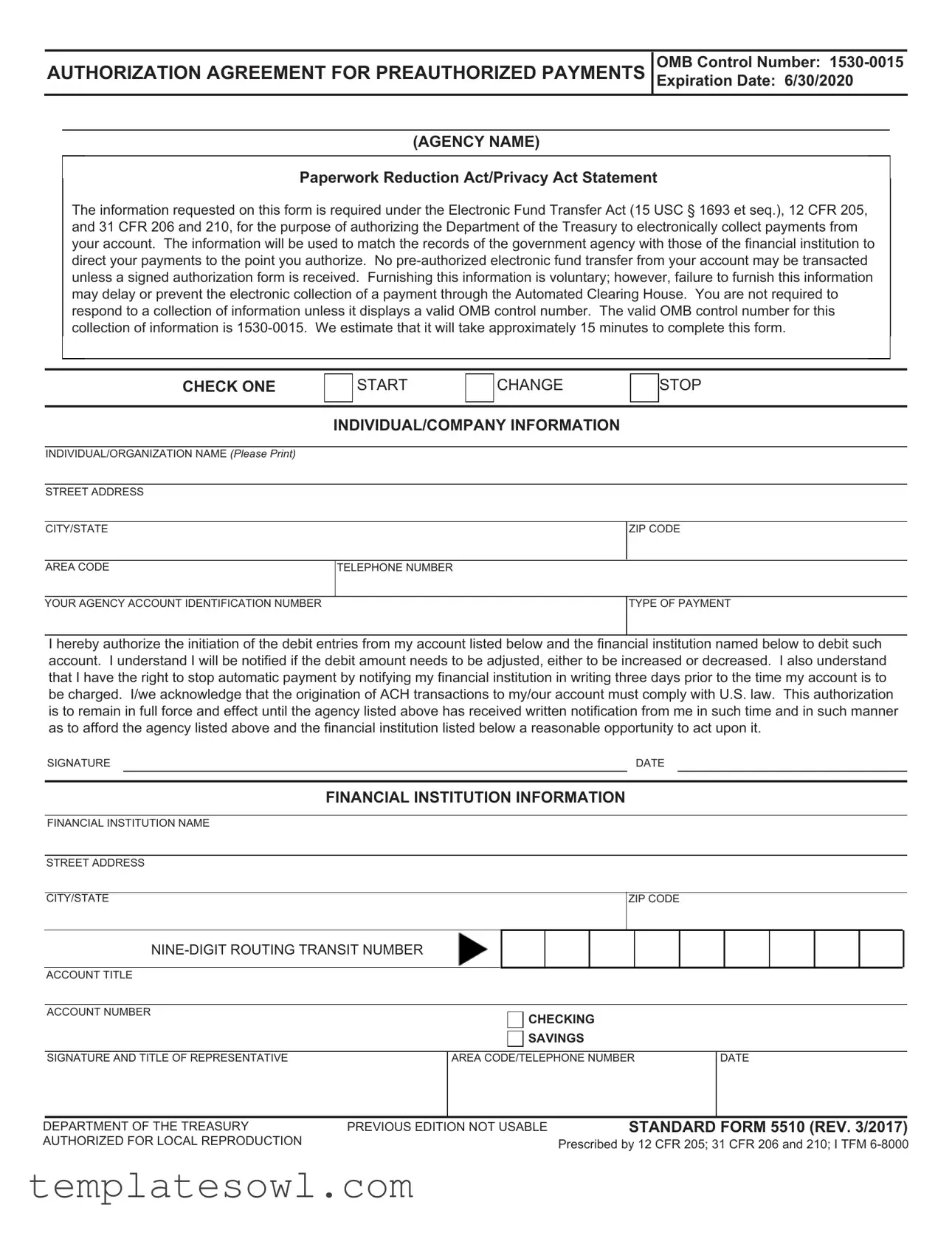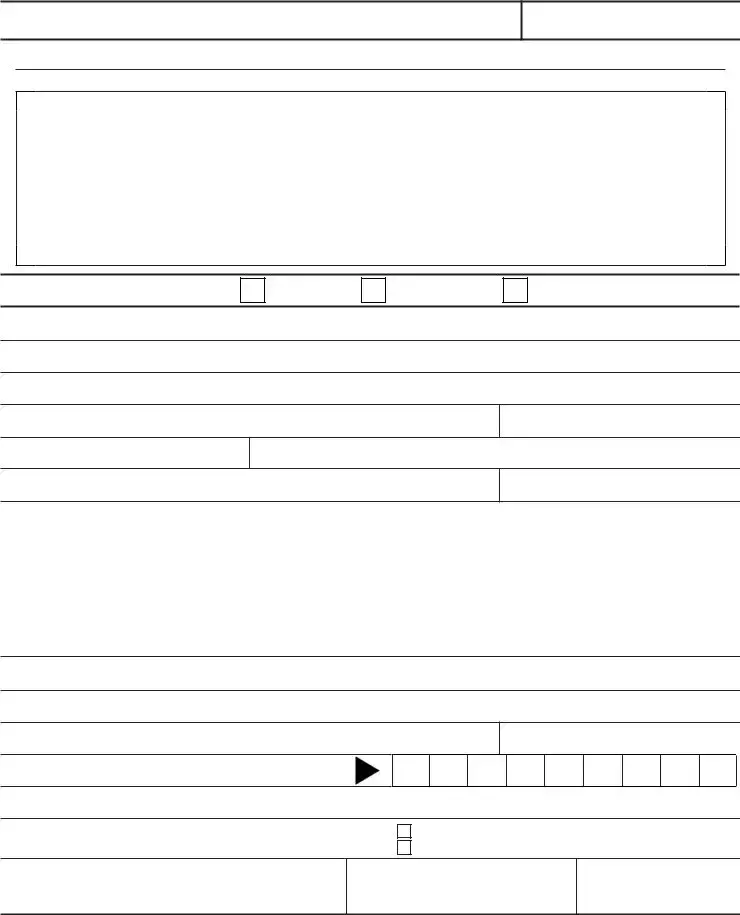Filling out the 5510 form can be straightforward, but many people make mistakes that can lead to delays or complications. One common error is failing to check the correct box for starting, changing, or stopping payments. Making an incorrect selection can cause your request to be processed incorrectly. Always ensure that you select the appropriate action for your situation.
Another mistake often occurs in the section for individual or company information. Participants sometimes forget to fill out all the required fields. Skimming over sections like street address, city/state, or zip code can lead officials to misidentify or misroute your request. Double-check that every requested item is complete and accurate before submitting.
It's easy to overlook providing an accurate account number. One miswritten digit can result in funds being debited from the wrong account. Always review your account number, including the nine-digit routing transit number, to ensure it’s correct. This simple step could save you from potential financial headaches.
The signature section can also pose challenges. Some individuals may forget to sign the form, while others might not date it correctly. A missing signature means that the form is invalid, and this can cause unnecessary delays. Make sure to sign and date the form appropriately before sending it off.
Failing to notify your financial institution in writing about changes can also create issues. If you want to stop automatic payments, you must provide notice at least three days in advance. Not adhering to this requirement can result in unexpected debits continuing even after you've requested to stop. Take note of this timeframe so that you can effectively manage your payments.
Another pitfall is misunderstanding the nature of the authorization. Some people incorrectly assume that once they submit the form, their payments are permanent. In reality, this authorization persists only until the agency receives written notice of your intent to terminate it. Stay informed about your rights and the conditions under which you can manage your automatic payments.
Lastly, many individuals may not take the time to read the entire instruction section before filling out the form. This can lead to key information being missed. Always review guidance provided to ensure you’re following the requirements properly. Taking the time to understand the form can simplify the process significantly.

